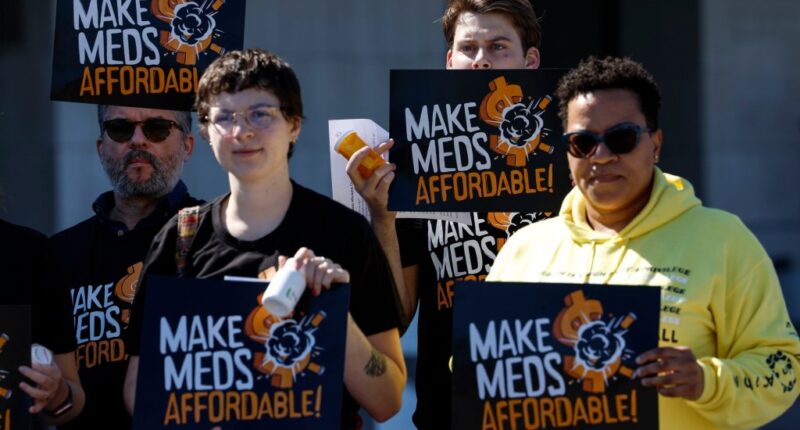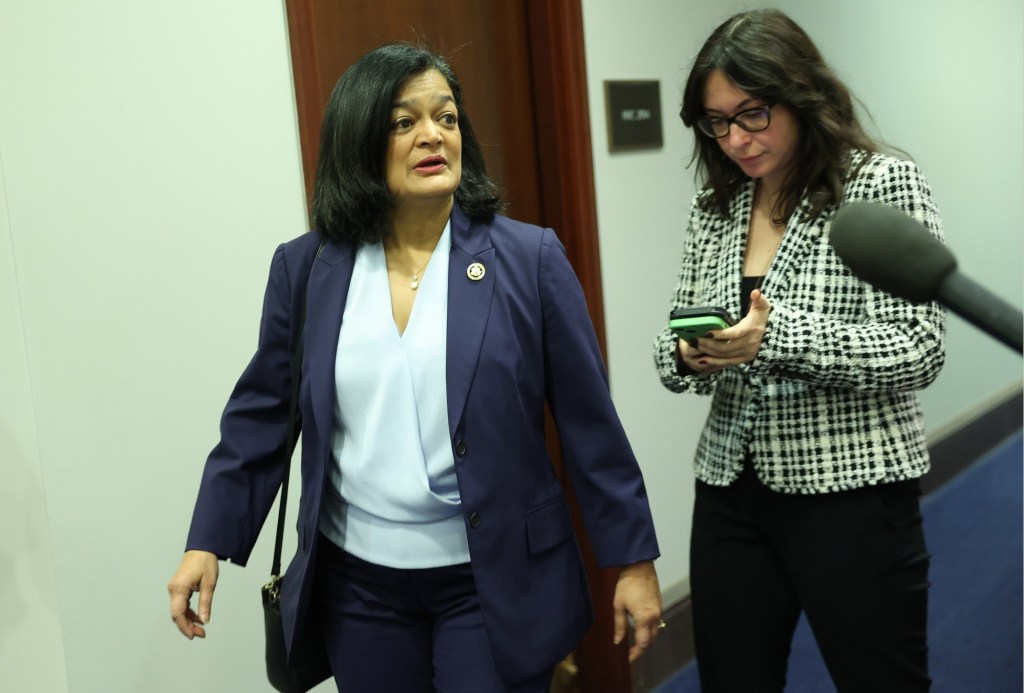Anna Claire Vollers | (TNS) Stateline.org
Spurred by fed-up customers, states are attempting to curb spiraling prescription drug prices by assembling particular public boards to analyze and regulate pricing.
The thought is much like an area utility board: a public group that units guidelines or makes suggestions to make sure that what they’re regulating — on this case, prescription medicines — is inexpensive.
Some state legal guidelines have approved these watchdogs to control drug costs for sure teams of individuals, corresponding to state staff or these with Medicaid plans. Legislatures in a couple of states — Colorado, Minnesota and Washington — granted boards broader energy to supervise drug costs for everybody within the state.
Over the previous 5 years, 11 mostly Democratic-led states have created prescription drug affordability boards, and the mannequin is selecting up steam nationwide. Simply this yr, lawmakers in 14 more states proposed laws to assemble their very own boards.
The boards’ duties differ from state to state, however they’re normally tasked with figuring out medicines that might be thought of unaffordable for many sufferers, discovering ways in which state well being plans or Medicaid packages can cut back drug spending, and, in some instances, capping the amount of cash that insurers need to pay for prescribed drugs.
“Drug pricing is an especially advanced system, and also you want consultants within the area that perceive how every thing works,” stated Andrew York, govt director of Maryland’s Prescription Drug Affordability Board. “Each state is proposing totally different legal guidelines and rules to make prescribed drugs extra inexpensive and generally they pull in numerous instructions.”
However customers have but to see vital financial savings. Most boards have had a sluggish rollout as they hammer out administrative and funding points that include creating a brand new state entity.
The boards which have made essentially the most progress, such because the one in Colorado, are going through pushback from patient advocacy groups involved rules might damage entry to some medicines, and from drug manufacturers, pharmacy benefit managers and others within the prescription drug provide chain whose income stand to take successful.
“We’re not anti-business,” stated Anthony Lourey, a former commissioner of the Minnesota Division of Human Providers who now chairs Minnesota’s Prescription Drug Affordability Board. “We wish [these businesses] to achieve success, however this market will not be clear sufficient for folks to really feel like they’re getting a good shake. Free market forces actually solely work when there’s equal data on each side of the equation. When there’s a lot that isn’t clear, it takes a public actor to result in transparency.”
About 6 in 10 American adults take no less than one prescription remedy, based on polling final yr from nonprofit analysis group KFF. And most adults, no matter political affiliation, instructed KFF the federal government hasn’t performed sufficient to restrict the worth of prescribed drugs.
Maryland’s board has held public conferences throughout the state because it evaluations medicines it’s recognized as being probably unaffordable. York stated members have heard from struggling sufferers at each cease.
“They’re selecting whether or not they pays their hire or afford their prescriptions.”
Sky-high prices
Pharmaceuticals in america, on common, value more than twice as much as they do in related high-income international locations. Of the hundreds of medication that elevated in value within the U.S. from 2022-2023, the typical improve was 15.2%, far higher than the rate of inflation, based on the U.S. Division of Well being and Human Providers.
Out-of-pocket prices differ, relying on the actual drug and an individual’s insurance coverage. Whereas practically two-thirds of individuals surveyed by KFF in 2023 stated affording prescribed drugs is no less than considerably straightforward, 3 in 10 reported not taking their medicine as prescribed attributable to prices. That share rose to 4 in 10 for sure teams, together with younger adults, Hispanic adults and other people with low incomes.
9 of the states that at the moment have boards are Democratic-controlled: Colorado, Maine, Massachusetts, Maryland, Minnesota, New Jersey, New York, Oregon and Washington. The opposite two — New Hampshire and Ohio — are Republican-controlled.
This yr, Democratic-sponsored state laws on prescription drug affordability boards popped up in purple states corresponding to Iowa and South Carolina, blue states together with Connecticut and Rhode Island, and swing states Arizona and Michigan.
In Virginia, Republican Gov. Glenn Youngkin vetoed laws that handed each the state Senate and Home — sponsored by Democrats, though the Senate model had a Republican co-sponsor— that may have established a prescription drug affordability board. In his veto message, Younkin stated the concept wasn’t confirmed to decrease costs and will restrict sufferers’ entry to therapy.
The way it’s performed
State prescription drug affordability boards all share the same mission — cut back the price of prescribed drugs for customers — however their diploma of energy and the strategies they use differ from state to state.
Some are unbiased, whereas others function as departments inside bigger state businesses.
Minnesota’s board, created underneath a legislation enacted final yr, has what are possible the broadest powers of any state board created to this point. It’s certainly one of simply 4 boards that may cap prescription drug costs, and certainly one of solely three that may affect drug pricing for all customers, not simply these on state well being plans. The nine-member fee is within the technique of hiring an govt director earlier than it begins reviewing prescription drug prices.
Maryland was the first state to create a prescription drug affordability board, in 2019. Democratic state legislators pushed for the legislation, which created a five-member commission appointed by the governor and different state leaders. The board has had a sluggish begin attributable to funding setbacks and the executive work it took to get a brand new company up and operating.
However now, after a number of months spent researching greater than 1,200 medication, the board has narrowed its focus to six drugs that it’s at the moment placing by way of a value evaluation.
“It’s an opportunity for the board to do a deep dive on particular medication and get the information they should perceive if [the drugs] are inflicting affordability issues,” York stated.
4 are diabetes medication: Ozempic, Trulicity, Farxiga and Jardiance. The opposite two are Dupixent, used to deal with bronchial asthma, and Skyrizi, which treats psoriasis, psoriatic arthritis and Crohn’s illness.
These are drugs that AARP Maryland has stated are “extensively used, very costly, and pose excessive hardship for state residents who can not afford them.”
The typical value to industrial insurers per affected person for the bronchial asthma remedy Dupixent, for instance, is almost $32,000 per yr. The board discovered that Dupixent’s average out-of-pocket cost for an individual with industrial insurance coverage in 2022 was practically $2,500.
If the board decides a drug is unaffordable, certainly one of its choices is to cap how a lot Maryland’s Medicaid and state worker well being plans would pay for the drug. That suggestion must be accepted by legislators.
Earlier this yr, a gaggle of Maryland lawmakers launched a invoice to broaden the board’s authority to cap or cut back costs for all Marylanders, not simply these on the state well being plan. It died in a Senate committee, amid pushback from the pharmaceutical industry.
Within the meantime, there’s work the board can do to assist extra sufferers afford their medicines that doesn’t contain value caps, York stated.
“What we discover in numerous conditions is that there are sources already out there to a affected person to assist them afford their drug, but it surely’s all super-complicated,” stated York. “It’s loads to ask of sufferers who don’t dwell and breathe drug pricing packages.”
The board has established an initiative to assist folks discover potential reductions and rebates that could be out there, and is engaged on an insulin affordability program that companions with producers to assist sufferers entry lower-priced insulin.
Pushback and a lawsuit
In February, Colorado’s board became the first in the nation to formally declare a drug unaffordable. The board voted unanimously to kick-start a course of to set an higher fee restrict for Enbrel, a well-liked drug used to deal with rheumatoid arthritis and different situations.
Enbrel prices insurers nearly $47,000 per patient per yr, based on the Colorado All Payer Claims Database. Most sufferers and caregivers surveyed by the Colorado affordability board stated Enbrel’s value made it troublesome to entry the drug, and a few reported they nonetheless had bother affording it even with monetary help. Pharmaceutical producer Amgen reported $3.65 billion in U.S. gross sales of Enbrel final yr.
A month after the choice, Amgen sued Colorado, arguing the board’s actions have been unconstitutional and asking the courtroom to strike down main components of the legislation that created the board.
In the meantime, Colorado’s board has continued reviewing medication. Final month, it declared arthritis medicines Stelara and Cosentyx unaffordable.
Again in Minnesota, the Pharmaceutical Analysis and Producers of America, the nation’s largest commerce group lobbying on behalf of pharmaceutical firms, spent nearly $1.3 million lobbying state lawmakers final yr as they have been debating that state’s invoice to create a prescription drug affordability board. The commerce group says authorities value setting threatens the event of latest medicines and that current boards have but to ship financial savings to customers.
“There will likely be pushback and there in all probability will likely be a courtroom problem, and that’s OK,” stated Lourey, of Minnesota’s affordability board. “States are the laboratories of invention. Whenever you’re inventing, it’s not going to be uniformly agreed what the boundaries are. So we’ll be taught from the opposite states. We’re watching, studying, paying consideration, taking notice.”
He and York each stated their boards are hoping to maintain strains of communication open with various stakeholders, together with pharmacy profit managers and drug producers.
“In our minds, there isn’t a dangerous man on this area,” York stated. “Everybody within the provide chain is reacting to precisely the incentives that our fee system supplies.”
Stateline is a part of States Newsroom, a nationwide nonprofit information group targeted on state coverage.
©2024 States Newsroom. Go to at stateline.org. Distributed by Tribune Content material Company, LLC.
Initially Printed:
Source link









